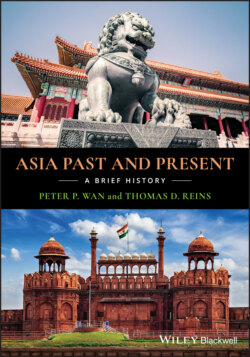Читать книгу Asia Past and Present - Peter P. Wan - Страница 74
Ancient Japan: The Land and the People (to the Seventh Century)
ОглавлениеJapan is an island country consisting of four main islands and many smaller islands. Its four home islands stretch from Hokkaido in the far north to Kyushu near the equator, placing most of the country in the temperate zone. Its main island Honshu has a mountain range stretching down its middle and reaching out to the coasts. On its eastern coast are two major plains: the Yamato Plain where Kyoto is located, and the Kanto Plain where Tokyo (Edo) is located. Most of its farmland is scattered along the coast on tiny plains. The soil is generally poor, and only 17% of its land area is under cultivation, but the warm and moist maritime climate allows crops to thrive. The scattered and isolated distribution of its arable land delayed the unification of the country for a long time.
Japan is often thought of as “small,” but its territory is actually larger than Great Britain, although smaller than either France or California. It is also often thought of as “isolated,” but it actually is separated from the Asian continent by no more than 120 miles at its closest point to Korea. This was a considerable distance by the standards of ancient times, and posed a formidable barrier to the ambitions of its stronger neighbors. But it was not an insurmountable obstacle to the Japanese, who were determined to borrow from the more advanced cultures of their neighbors. Stone Age cultures were widely scattered across the islands of Japan by 40,000 BCE, and the Jomon culture was one of them. These typically constituted hunting, gathering, and fishing people who lived in sunken pit shelters. They were likely the Ainu people, whose physical appearance was more like Caucasians than modern Japanese.
